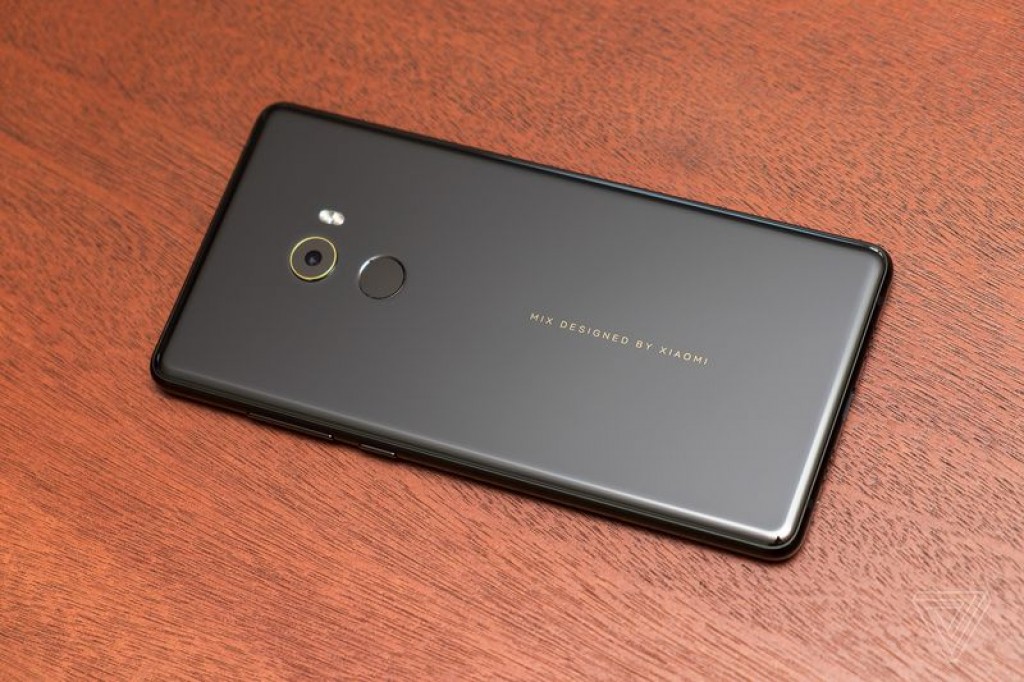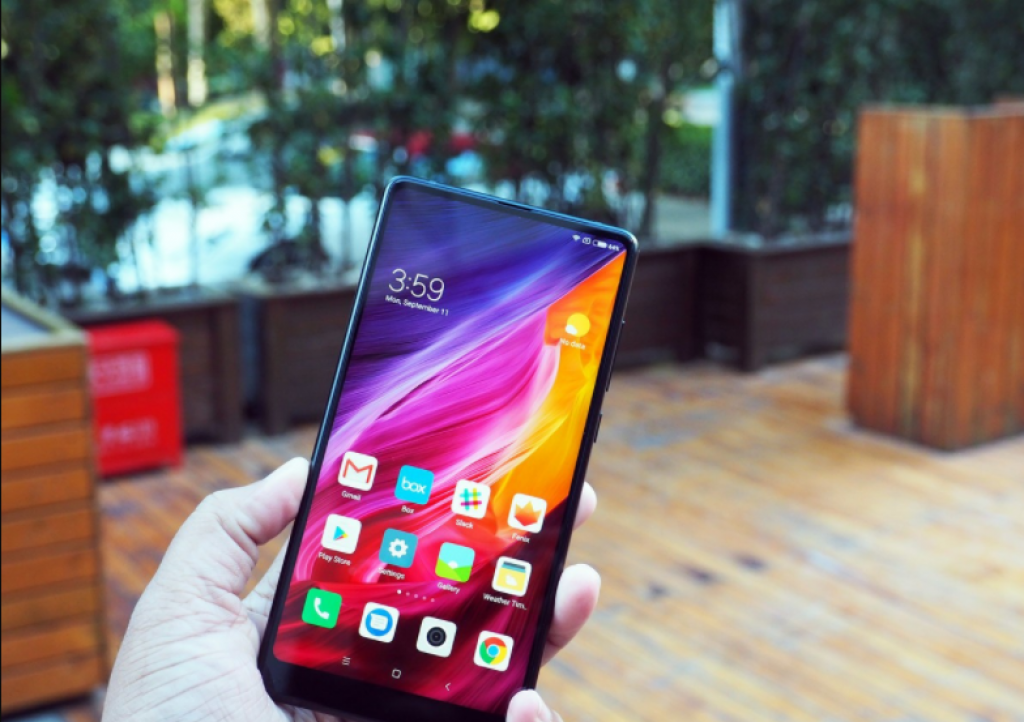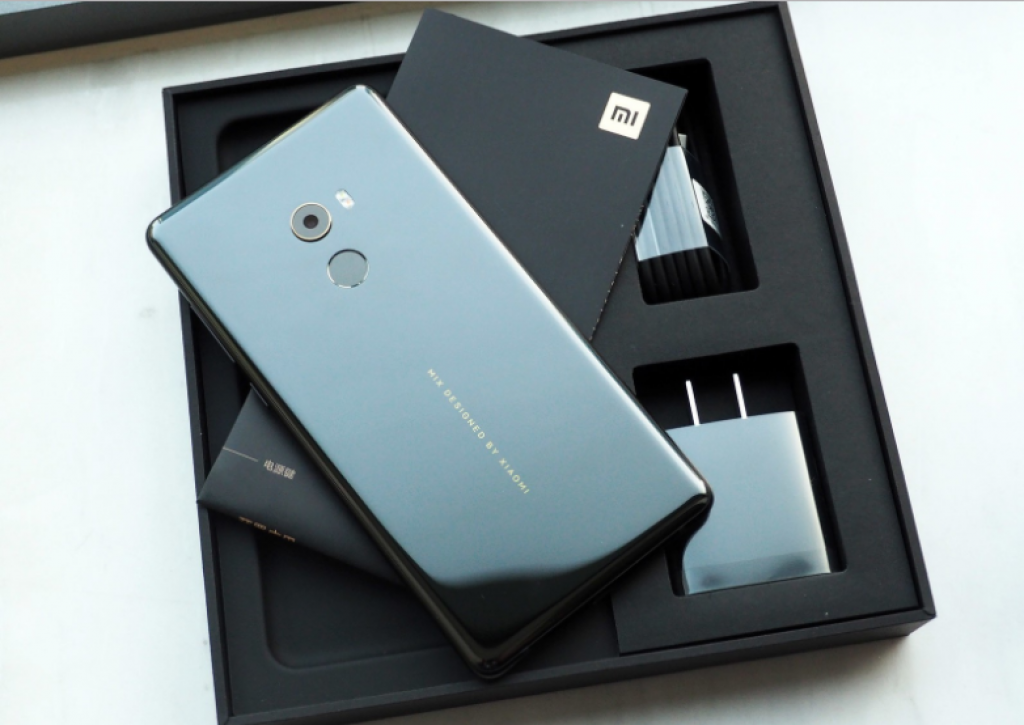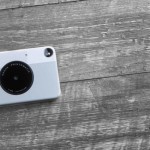
The biggest and most obvious trend in smartphones right now is the effort to eliminate the bezel, or frame, that surrounds a phone’s display. The goal is to create a feeling that you’re only holding a screen in your hand, and there’s nothing else to distract you from what’s being displayed on that screen. Established players (Samsung and LG) and newcomers (Essential) alike are all trying to reach that goal. Even Apple is expected to announce new iPhone that largely eliminates the border around the screen this week.
Xiaomi is also playing this game and it actually had a head start over much of the industry when it launched the Mi Mix last year. The Mi Mix was one of the first phones to come out with nary a bezel at all. Its enormous 6.44-inch screen was pushed to the very corners of the phone’s frame, and the entire design of the device was driven by this goal to eliminate the border entirely.
That drive forced Xiaomi to make some interesting design decisions, such as forgoing a standard earpiece for a fancy piezoelectric version and moving the front camera down to the lower right of the phone’s frame. Not all of these changes were good: the earpiece was far inferior to a standard speaker and despite the efforts to shrink the phone’s frame down, the Mi Mix’s enormous screen meant it was still a giant device. Xiaomi was likely aware of these issues when it labeled the phone as a “concept” device, even though it was available for purchase in the company’s home market of China.
Now Xiaomi has announced the Mi Mix 2, which rectifies some of the issues of the original and drops the concept tag. This new model is smaller and more approachable than the first Mix, and it will eventually be available everywhere Xiaomi sells phones (which, sadly, does not yet include the US). It will first be available in China, with prices ranging from from 3299 yuan (about $500) to 4699 yuan ($720).

Like its predecessor, the Mi Mix 2’s standout feature is the edge-to-edge display. This time it’s a more manageable 5.99-inches with an 18:9 aspect ratio, similar to what Samsung and LG are using on their high-end phones this year. That means that the Mi Mix 2 is much smaller than the first version, and therefore much more practical to use. It basically sits in between Samsung’s Galaxy S8 and S8 Plus in terms of overall size.
The display itself is a bright and vibrant LCD panel with wide color gamut and 2,160 x 1,080 pixels of resolution. It has rounded corners and just the scantest of frames above and on the sides of it. The border below the screen is larger, as it houses the front camera (which is now better disguised thanks to a “super black” lens coating), a notification light, and other electronics necessary to power the panel. The screen itself isn’t as vibrant, bright, or hi-res as Samsung’s OLED displays, but it’s still very nice to look at and perfectly fine in every day use.
Along the top of the phone is a standard earpiece speaker tucked into a tiny slit — Xiaomi has ditched the fancy but ultimately worse piezoelectric speaker from the first Mi Mix. The Mi Mix 2 does not have a standard proximity sensor to turn off the screen when you hold it up to your ear for a call, but uses an ultrasonic system to accomplish the same effect. Both the speaker and ultrasonic proximity feature worked in my tests, though the Mi Mix 2 doesn’t sound as good in calls as an S8.


Being Xiaomi’s flagship phone, the display isn’t the only high-end feature on the Mi Mix 2. Inside is Qualcomm’s Snapdragon 835 processor, 6GB of RAM, and either 64, 128, or 256GB of storage. The Mix 2’s performance is snappy, and the 3,400mAh battery makes it last all day without much issue. If you feel that you need even more power, a Special Edition of the phone offers 8GB of RAM and 128GB of storage. Though the Mix 2 isn’t going to be sold in the US, it does support 43 network bands and works on LTE networks in America. I’ve been using it on T-Mobile and have had LTE signal and VoLTE support basically every where I’ve expected to.
The rest of the phone’s design continues the high-end theme. The back of the Mix 2 is ceramic, which is mated to an aluminum frame. Fit and finish are on par with the best that Apple, Samsung, and LG have to offer — the Mix 2 is legitimately a premium device. The Special Edition model takes that a step further: it doesn’t just have a ceramic back, but a completely ceramic unibody, which Xiaomi claims is a first on any phone. It’s quite an achievement, though the standard model’s metal frame is a little easier to grip in my experience. Both versions are serious fingerprint magnets, as well.


Even though it comes with a long list of premium features, there are things that the Mi Mix 2 doesn’t have. It lacks any sort of rated water resistance; it has a standard, single-lens camera instead of a dual-camera set-up; and it doesn’t have a headphone jack or wireless charging. The 12-megapixel camera comes with an optically stabilized f/2.0 lens and has large pixels, so it is capable of taking good photos. It won’t keep pace with the best cameras from Google, Apple, or Samsung, but it’s certainly good enough for most people.
Xiaomi’s software is polarizing, as well. The Mi Mix comes with MIUI 9, which is based on Android 7.1.1 Nougat, but doesn’t look like anything that comes out of Google’s offices. It’s best described as an interpretation of iOS, made to fit the Android platform. MIUI 9 is fast, and does have some useful features here and there, but it almost feels like a completely different platform than other Android phones, which many purists may not like.

But despite those shortcomings, the Mi Mix 2 packs plenty of wow factor, and it’s the phone that comes closest to reaching the “full screen” goal this year. It doesn’t have the crutch of a cut out for the front camera like the Essential Phone, nor does it rely on curved screens to hide the sides of the phone like Samsung. It’s just a giant screen crammed into a surprisingly manageably-sized phone.
Sоurсе: theverge.com









































